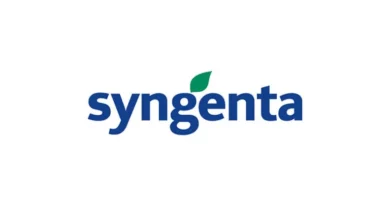Peacharines flourish in Mangaweka microclimate
14 March 2024, New Zealand: They call it a summerfruit orchard, but Diana and Grant Baird pick their peacharines and plums at their Mangaweka Fairview Orchard in the early autumn, making it one of the latest seasons for orcharding in New Zealand.
The Kawhatau Valley has grown abundant peacharines for over 30 years, along with Black Doris and Omega plums, and a new Sweet Dream peach variety.
The legendary Healey’s Peacharine is Diana’s pride and joy, while apricot and nectarine plantings have been replaced over the years. But they’re constantly planting new trees and trying out new cultivars.
“If we have a new variety we have a two bite taste test: 1. Do we want to have another bite? 2. Do we want to finish the fruit?” she says.
Several Central Otago growers also grow peacharine varieties and the two areas have similar seasonal characteristics – except for the high rainfall in the Mangaweka.
Renowned for being difficult to grow, the peacharine has superior eating qualities and the microclimate of the Kawhatau Valley is a perfect environment for it.
At 550m there isn’t a day of the year that hasn’t at some stage been affected by frost in the past 100 years. “No I don’t just light my fire on Christmas day for the ambience,” Diana says.
The rainfall is also high, and this part of the country has not escaped the flooding affecting many areas in recent years, with structural repairs to bridges and State Highway 1 still currently threatening to drop into the river.
“The challenges that we face are often quite different from other growers,” Diana says.
Access to spray and equipment, packing facilities, and the ability to borrow from neighbours isn’t so straightforward for Diana and Grant and their son, who are also sheep and beef farmers.
“If gear breaks down, we don’t just have contractors close by to call on.
For summerfruit, cool chain transportation to markets is critical when fruit is sent to retailers all over the North Island.
The fruit is grown in soils where nutrients are actively monitored and micro-organisms tailored for optimum plant health and ongoing sustainable production.
Growing an abundance of fruit comes from being careful, Diana says, and prides her husband Grant on being a very good orchardist.
“He’s very interested in what he does, carrying out a lot of crop monitoring while he’s spraying. We’ve done a lot of work with biologicals in recent years.”
Being harvested late in the season, the fruit is exposed to longer sunshine hours, which Diana says give it higher levels of Vitamin A, carotene and Vitamin C.
Back in 2008 and 2012 Fairview Orchard won Ballance Farm Environment Awards for nutrient management, crop management, water management and innovation.
“It’s an endorsement from peers that you are doing good things,” she says.
Diana and Grant make a real effort to attend SummerGreen grower days and conferences, acknowledging that support and advice from their peers and industry leaders is often difficult for them to access in their part of the world.
Although her experience in the corporate business world set her up well for contributing to the family orchard, ten years ago she went back to university to upgrade to a Master’s degree. This reassured her that sticking to their strategy of niche marketing of plums and peacharines was the right move.
“You either need to be so big and drive the internal economics, competition and the monopoly, or set the terms to be a niche market. There’s not really any middle ground.”
It is with smaller players that you often find innovation, she says.
“And we are smaller, in an out-of-the-way spot, and do weird things… the very definition of ‘niche’. At the end of the day I’m just interested in producing fruit that reliably tastes good.”
Looking back on her orcharding life, one of the mentors when she first started that stands out for Diana is the late Basil Goodman.
Ignorantly seating herself at the directors’ table at the MG Marketing Annual General Meeting many years ago turned out to be the best move – she gained some valuable advice from the Summerfruit NZ guru, and describes him as revolutionary.
“Basil Goodman once said to me that you need reliable access to labour and transport. I agree that without them you are spitting in the wind,” Diana says.
Diana loves the people and getting out either in her community offering fruit at church on Sundays, or heading to the city to meet her big clients. She’s either selling fruit or giving it away, and people are at the heart of the business.
“When it’s all working well, it’s just a dance.”
Just like when you walk into a packhouse and see everybody busy and the fruit constantly moving, it’s all harmonious and with its own rhythm.
Also Read: No pump and no hassle with the new Demand® CS insecticide 10-gallon drum from Syngenta
(For Latest Agriculture News & Updates, follow Krishak Jagat on Google News)















